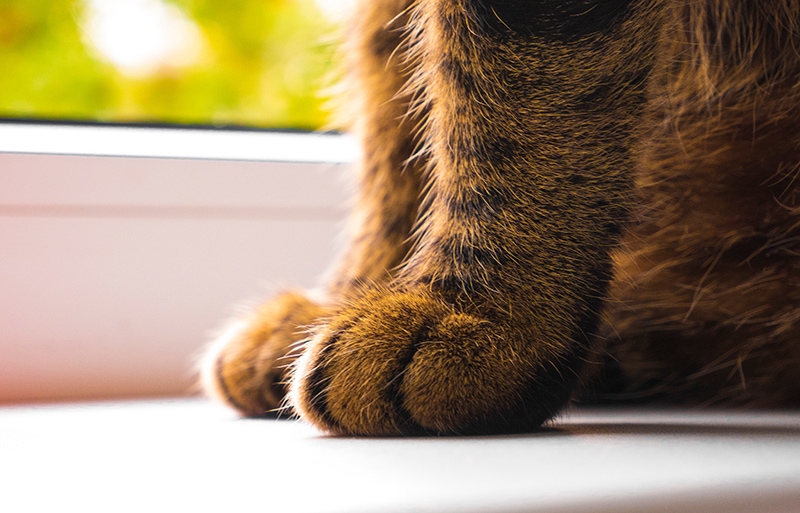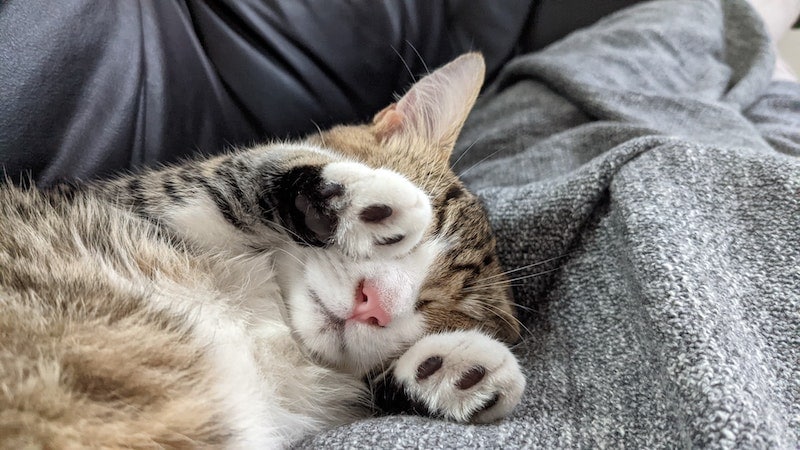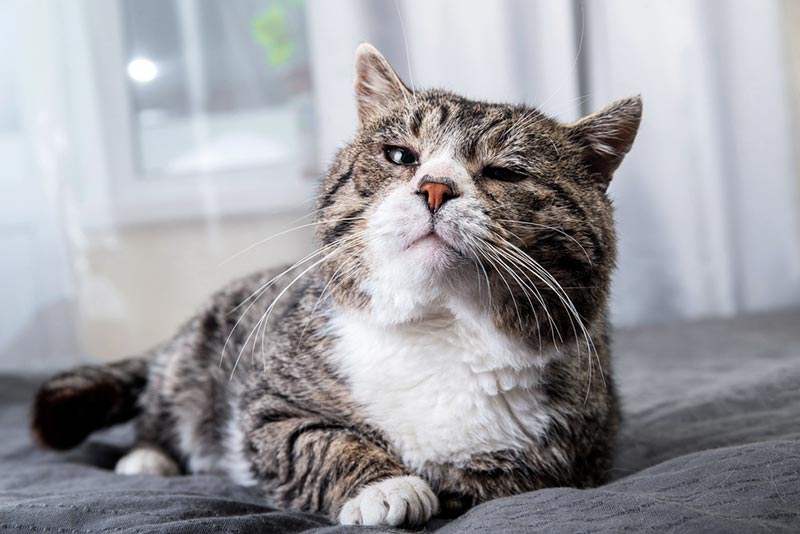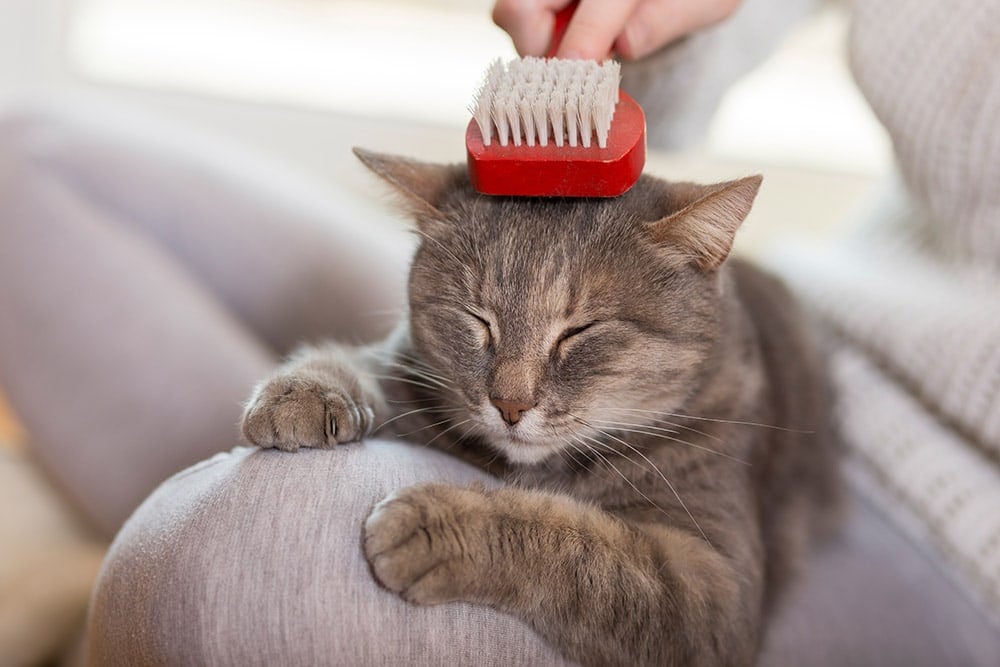
A pleasant experience for a cat owner is cuddling their beloved pet, particularly when it’s cold outside. But you might suddenly experience an electric shock while stroking your cat’s fur or touching their nose!
This is static electricity,1 the same thing that makes our hair frizzy or shocks us when touching a metal door handle. Something as simple as overbrushing can cause electrons to build up and result in a shock. Keep reading as dive deeper into this.
Here are six reasons that cats get so staticky and a few tips to help reduce the chances of an unpleasant shock.
The 6 Reasons Why Is Your Cat So Staticky
1. Dry Air
It’s common to have dry air in the house, especially in winter, and it is a leading cause of static electricity. While it tends to happen more often in the cold months, it is likely to occur whenever there isn’t enough humidity in the air.
Basically, your cat builds up extra electrons as they walk across surfaces like carpets and fabric furniture, which gets discharged when touching another surface, like you.

2. Dry Coat
If your cat’s skin is especially dry, they can easily build up static electricity while you’re stroking their fur. You can tell that your cat’s coat is dry if you see dandruff when brushing it. The drier the coat is, the more frequent the shocks will be.
3. Synthetic Fibers
You’ll need to check the material of your cat’s bed, blanket, or any other item that they sleep on. Synthetic fibers are notorious for building up static electricity, especially polyester.
If static electricity is a persistent problem in your home, you’ll want to opt for natural materials for your cat’s lounging and sleeping needs.

4. Overbrushing or the Wrong Type of Brush
Every time you brush your cat, you will likely notice static electricity building up. Sometimes, it might be because you’re spending too much time brushing your cat, which is necessary for some cats, particularly if they are matted or long haired. Other times, the material of the brush can be a problem. For example, plastic is not the best choice if you’re trying to avoid static.
5. Cat’s Age
Senior cats tend to have dry coats that start to become more brittle as they age. This means it’s easier for static to build up, whether you’re brushing them or not.

6. Personal Problem
It might not be your cat! If your cat’s coat and skin are well-moisturized, and everything else seems okay, it might be you with the staticky problem!
It could also be both of you, but if you touch your cat and experience a shock, it might be from your own electrons building up.
The 6 Tips to Reduce Static Electricity
If the static electricity seems out of control in your home, there are a few steps that you can take to reduce those unpleasant shocks.
1. Humidifier
Since static tends to be a much bigger issue in the winter, invest in a good humidifier that will keep your house at a higher humidity level. You’ll need to purchase one for each room that you and your cat spend the most time in. Bathrooms won’t need one, though.
You could also consider picking up a hygrometer, which will help you track your home’s humidity levels.

2. Moisturization
Most cats don’t need baths, as they technically bathe themselves. But if you must bathe your cat, ensure that you only use a moisturizing shampoo and conditioner made for cats. Other kinds of shampoo will dry out and irritate your cat’s skin.
Cats should only be given a bath about once a month, as even with the most conditioning shampoo, their skin will be consistently stripped of natural oils.
You can also try a conditioning spray, which can be lightly sprayed and brushed into your cat’s coat. This will add extra moisturizing elements.
3. Supplements
You can add supplements or purchase treats and/or food that are designed to help moisturize your cat’s coat. Specifically, look for omega-3 fatty acids because these keep cats’ coats moisturized and have additional benefits for joint health.
Speak to your vet for suggestions and if you plan on changing your cat’s food.
4. Natural Materials
If you’ve discovered that some of your cat’s bedding is made with synthetic fiber, opt for natural fibers like wool or cotton. These are also more sustainable options.
5. New Brush
If you’ve been using a plastic comb or brush on your cat, you’ll want to switch to metal, as plastic will increase static electricity. Even better is an ionic brush, but that might be hard to find.
You can also spray water on the brush before brushing your cat, which will help reduce the static.

6. Moisturization
Before petting your cat, use a bit of hand lotion (aim for something without any scent), so your hands won’t be as dry and cause shocks.
You can also dampen your hands with water before touching your cat, but that might end up drying out your hands, and your cat might not appreciate you making them wet.
What You Shouldn’t Do
Be careful with any product that you put on your cat’s coat. Remember that cats are meticulous groomers, which means they will ingest anything that goes on their fur.
Don’t use dryer sheets to wipe your cat. While they can work for our staticky hair, they contain cationic detergents, which are toxic to cats because they are corrosive.
Signs include:
It’s essential to keep dryer sheets and other kinds of detergents away from your cat.
Conclusion
Static electricity is due to a lack of moisture and humidity. Adding humidifiers to your house and ensuring that your cat is eating a healthy diet that includes omega-3 fatty acids will go a long way in reducing static. Never put anything on your cat’s fur that isn’t safe or made for cats.
Now you know what causes those nasty shocks between you and your cat. That means you can fix it—or at least make it less shocking!
Featured Image Credit: Lana Leon, Shutterstock

